Improving Future Smiles with Pediatric Orthodontics
At Khara Orthodontics, we provide early treatment to help children deal with current problems and prevent serious and possibly painful complications. Our innovative treatment options and kid-friendly approach ensure that all of our young patients are happy, confident, and always have a positive experience.
If your young child is facing orthodontic problems, schedule a visit today! We’ll do all we can to make sure they receive timely quality care.
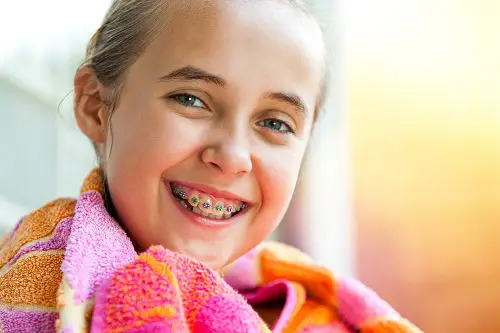
What is Early Treatment?
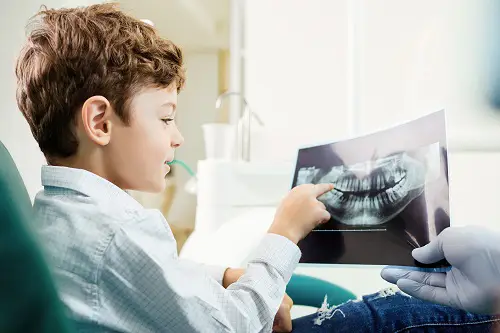
Early treatment uses innovative orthodontics to help young smiles achieve a healthy alignment. Afterward, the orthodontist allows a resting period, followed by the second phase of treatment to finalize their straight, healthy smile.
With early treatment, the orthodontist can:
- Guide jaw growth
- Lower the risk of trauma to protruding front teeth
- Correct harmful oral habits
- Create a healthier alignment
- Reduce or eliminate speech impediments
- Improve the appearance of teeth, lips, and facial structure
Why Does My Child Need Braces Twice?
The first phase of treatment helps to address serious issues and may not include brackets and wires, while the second phase ensures their smile stays as healthy as it possibly can. In some cases, the second phase of treatment may require less tooth movement and take less time than a single treatment would.
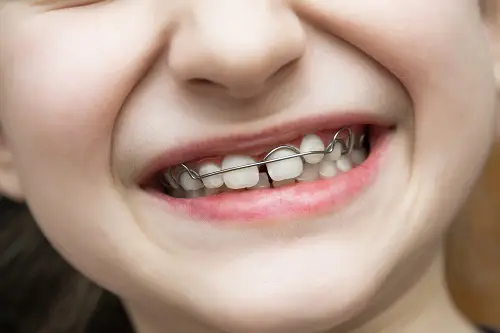
Phase One Orthodontics: Building a Healthy Smile Foundation
The goal of phase one is to create a healthy oral structure that will help to accommodate new teeth and encourage optimal alignment. It’s also a valuable way to help kids to reduce or avoid the need for more advanced methods, including tooth extraction or jaw surgery. Two of the most important aspects of this treatment are dental alignment and jaw growth.
Dental alignment affects where the teeth are, which way they face, and how they meet. Jaw growth is essential for making space for teeth, both now and when adult teeth start to emerge. When planning treatment, Dr. Khara looks for the most effective treatments to improve both of these factors and prepare your child’s smile for future success.
Since the jaw is young and has a lot of development time left, it’s much easier to guide naturally into a healthy, uniform shape. Various dental appliances may be used during this phase, such as:
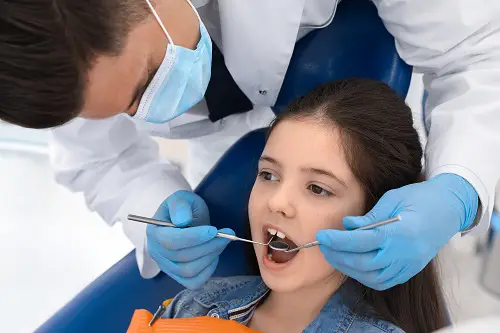
- Headgear – Used to address bite issues. A combination of a metal frame and straps, headgear comes in various configurations depending on what kind of adjustments the bite needs.
- Spacers – Special bands, usually rubber, placed between teeth to create more space. This may be used when teeth are crowded to make later treatment with braces more effective.
- Expanders – These unique appliances are designed to widen the oral structure, especially the palate. They gradually expand the palate, improving bite and breathing.
- Functional Appliances – Functional appliances can be fixed or removable, and address a wide variety of alignment issues. Each appliance is designed and selected to fit the child’s unique mouth structure.
- Braces – Most often, the first phase does not include braces, as the focus is on preparing the jaw for the adult teeth and later treatment. If used, braces may be applied to all teeth or only some.
Effective Phase One Treatment with the Rapid Palatal Expander

The RPE applies gentle pressure to the base of the upper teeth, gradually guiding them outward and widening the palate. The increase in space reduces crowding of the upper teeth and corrects a crossbite (where the lower jaw is wider than the upper jaw). It also improves breathing ability, creating more room in the nasal passages and reducing the need to breathe constantly through the mouth.
Your child will likely wear the appliance for several months after the expansion has finished. This ensures that the teeth don’t shift back and that the mouth retains its healthy new alignment.
The Resting Period: Encouraging Healthy, Natural Growth
Your child may still wear an appliance or retainer during this phase, and have periodic visits to see how their development is progressing, but the more advanced treatment likely won’t begin for several years.
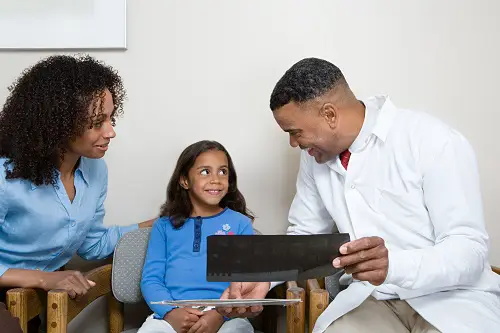
Phase Two Orthodontics: Completing Your Child’s Smile

The second phase focuses on creating and sustaining healthy positioning, spacing, and orientation of their teeth as well as proper jaw alignment. This is typically done with braces, though the type and length of treatment will depend on the unique situation and how diligent your child is in caring for their smile.
Once the braces are ready to come off, a retainer helps to keep teeth from shifting back, and your child can now enjoy their new, healthy smile.
When Should My Child be Evaluated for Braces?
Dr. Khara recommends that all children have an orthodontic evaluation by the time they’re seven years old. At this age, they’ve started losing their baby teeth, and the first primary teeth have started to come in. Their first molars appear around this time as well.
At this point, the orthodontist can get a better idea for how your child’s smile will develop. Using state-of-the-art technology, such as digital x-rays, Dr. Khara can examine the smile both visually and below the surface. This allows him to see how teeth are developing, whether there is a current health problem, or whether alignment will worsen in the future.
In some cases, an alignment issue may be severe enough that your child’s dentist will recommend you seek treatment earlier than age 7. It’s important to listen to these recommendations and have your child evaluated quickly to protect their teeth and their overall health.
Even if your child doesn’t need early orthodontics, monitoring their development is still an important part of their care. Dr. Khara keeps an eye on their teeth to ensure the process is going smoothly, and will be able to develop a better idea of what kind of future treatment they may need.
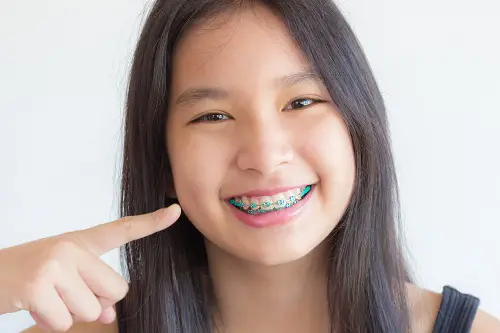
What are the Benefits of Early Treatment?

- Health – A better alignment makes it easier to keep teeth clean, reducing the risk of disease and uneven wear on teeth.
- Safety – Misaligned teeth have a higher risk of damage from accidents, and sores in the cheeks and lips are common from bites while chewing. A healthy alignment lowers the risk of both.
- Comfort – A healthy alignment feels better in the smile, is less likely to bite the cheeks or tongue, and lowers the risk of headaches and jaw pain.
- Function – With better alignment, your child can bite and chew more effectively, improving their digestion. It also reduces speech issues caused by a poor dental structure.
- Aesthetics – A healthy smile is an attractive smile, and will dramatically improve your child’s facial features and overall appearance.
- Self-esteem – The boost in confidence your child gets from an attractive smile free of health and speech problems is a truly priceless gift.
How Can I Tell If My Child Needs Early Treatment?
If your child’s teeth are visibly misaligned by age six or seven, it can be a good indicator that early orthodontic treatment is needed. However, this isn’t always the case.
Sometimes, even misalignments you can see aren’t currently serious, and it’s okay to wait until they’re older to begin treatment. It’s also possible that their smile may look healthy, but may have less obvious problems, such as a small jaw or side-to-side jaw movement. This is why it’s important to have your child examined by a professional orthodontist.
The most important thing to pay attention to is whether your child’s dental alignment is negatively affecting their health. Issues such as teeth not meeting, overlapped teeth, unusual jaw movement, or a jaw that’s set too far back can all have extensive health consequences.
Pay attention to anything you notice about your child’s smile that concerns you, and don’t be afraid to bring your child in for evaluation. It’s always better to be proactive about your child’s health than to wait until small problems become big ones.
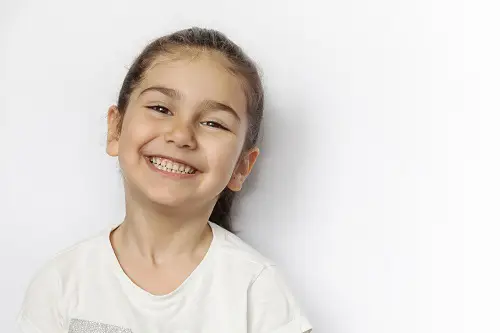
Committed to Your Child’s Developing Smile

Contact our office to schedule your visit and start your child on the path to their best smile today!
